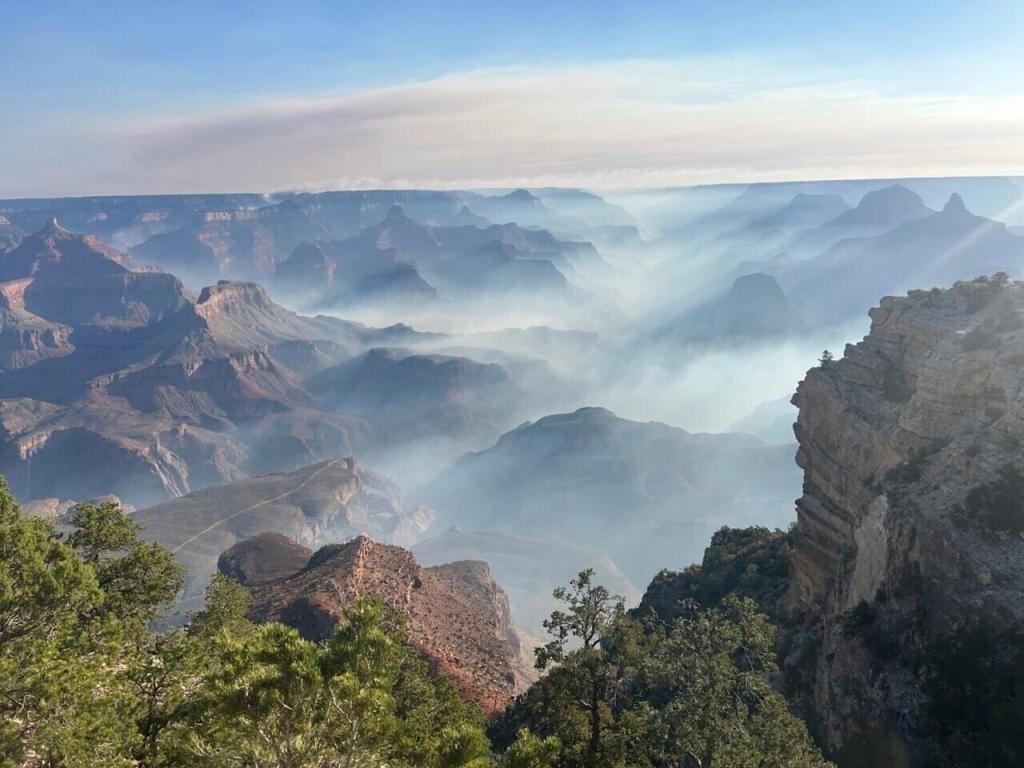Wildfires Prompt Evacuations at National Parks in the U.S. West
In recent days, the ongoing threat of wildfires has led to the evacuation of visitors and staff from two significant national parks in the western United States: Black Canyon of the Gunnison National Park and the Grand Canyon’s North Rim. Both parks faced challenging conditions fueled by extreme temperatures, low humidity, and gusty winds, prompting officials to take immediate action to ensure safety.
The Situation at Black Canyon of the Gunnison
Located approximately 260 miles southwest of Denver, Black Canyon of the Gunnison National Park closed its gates on Thursday morning after lightning ignited wildfires on both sides of the canyon. Current reports indicate that the fire on the South Rim has consumed approximately 2.5 square miles, with no containment efforts yielding positive results as of yet. The park’s management has taken the precaution of closing it until further notice, emphasizing the unpredictable nature of weather conditions that could exacerbate the fire.
Firefighting Efforts Underway
Firefighters faced a challenging battle as they acted to protect critical park infrastructure, including the visitor center on the South Rim. They employed techniques such as the removal of dry vegetation and the application of protective materials around the structures. Small aircraft from Colorado’s Division of Fire Prevention and Control assisted ground crews by dropping fire retardant in a bid to curtail the spread. However, the combination of heat, wind, and dry vegetation has complicated these containment efforts, making the situation precarious for both wildlife and human visitors.
Evacuations at Grand Canyon’s North Rim
Similar circumstances unfolded at the Grand Canyon’s North Rim in Arizona, where a wildfire threatened to disrupt the natural beauty and visitor experience. The fire, initially sparked by a thunderstorm on Wednesday evening, has burned about 1.5 square miles of nearby Bureau of Land Management land, with no containment achieved. Consequently, the North Rim park officials were forced to evacuate approximately 500 overnight visitors late Thursday evening, while personnel and residents received instructions to shelter in place for their safety.
Community Response and Evacuation Measures
Local authorities, including the Coconino County Sheriff’s Office, coordinated evacuation efforts for those in hazardous zones, particularly campers in the adjacent Kaibab National Forest. The swift action of emergency services prioritized the safety of both visitors and staff, ensuring that potentially affected individuals received timely warnings and proper guidance throughout the crisis.
The Broader Impact of Wildfires
The wildfires at both parks underline a broader issue concerning the increasing frequency and intensity of wildfires throughout the western United States, particularly during summer months. Factors such as climate change, prolonged drought conditions, and changes in land management practices contribute to this growing concern. Ecologists warn that these fires can have lasting impacts on ecosystems, wildlife habitats, and the parks themselves, necessitating more robust prevention and response strategies.
Looking Ahead
As wildfire containment efforts continue, park officials are urging the public to stay informed and heed any evacuation orders or safety guidelines. Wildfires, while a natural part of many ecosystems, pose significant risks to human populations and infrastructure. The current incidents at Black Canyon of the Gunnison and the Grand Canyon emphasize the crucial need for vigilance and preparedness in the face of disastrous natural events. Visitors planning trips to these iconic parks should monitor park alerts closely and prepare for potential changes to access and services due to ongoing fire conditions.
By focusing on safety, effective firefighting strategies, and the importance of awareness in wildfire-prone areas, authorities hope to mitigate the risks associated with these incidents and preserve the natural beauty for future generations.









